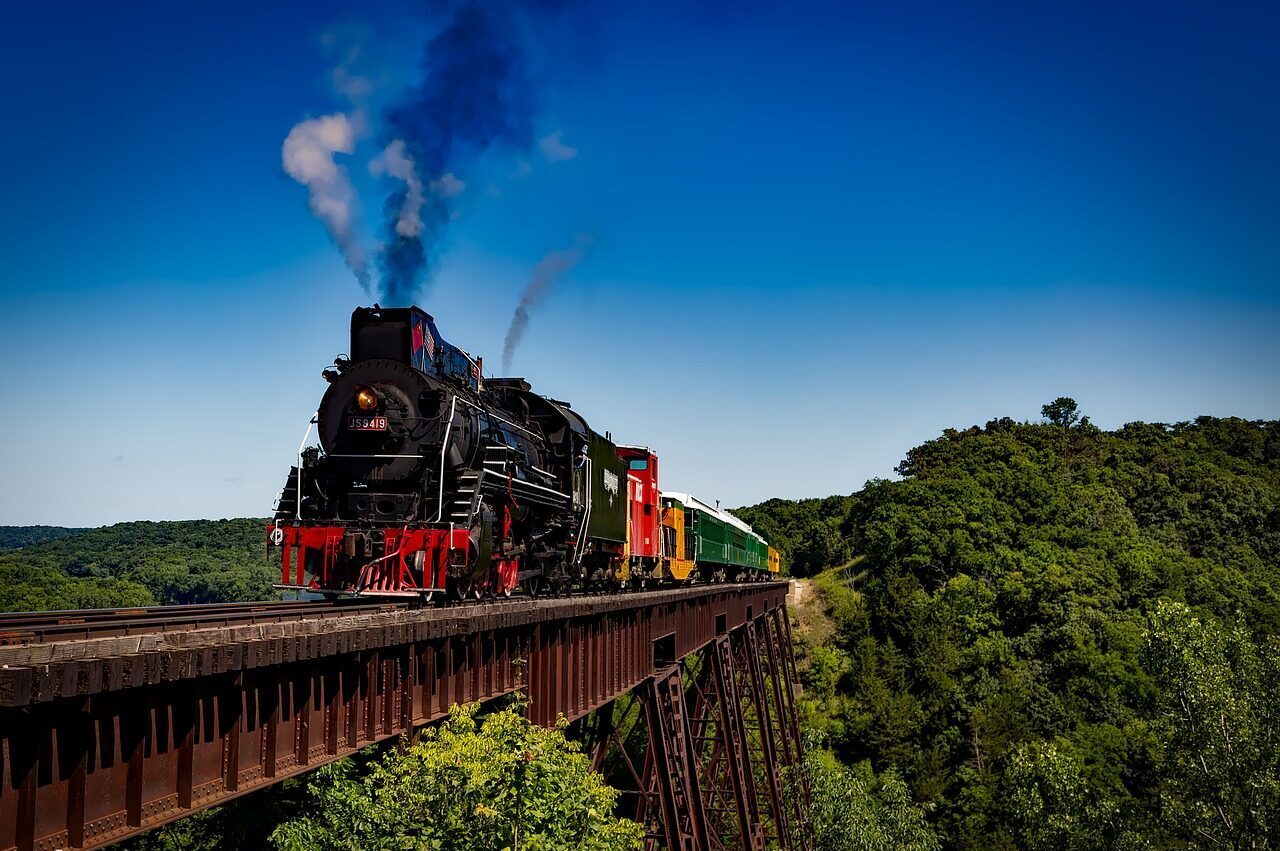The history of railroads in the United States, Canada, and Mexico is closely related. U.S. railroads have built routes in Canada and Mexico. Railroads from Mexico and Canada have interests in U.S. railroads or operate routes in the United States. These ties have been strengthened since the formation of NAFTA in 1994 and are also evident in the rolling stock: nearly all locomotives and cars from the United States, Canada, and Mexico can move freely between the three countries.
1826-1860 Beginnings
Before the advent of railroads, roads and rivers were the most important transportation routes, as they were in Europe. The first railroad in the United States opened in Quincy, Massachusetts, in 1826. Their job was to transport granite from quarries to the Neponset River. In the late 18th and early 19th centuries canal construction led to an improved transportation system. The construction of the Erie Canal between Buffalo and Albany created a link between New York City and the Great Lakes.
However, because of geographic conditions, it was impossible to build canals everywhere. The Appalachian Mountains prevented the construction of a waterway from Baltimore to the west. The 28th. February 1827, the Baltimore and Ohio Railroad was founded as the first American railroad company to build a branch line into Ohio. From the beginning the plan was to offer regular freight and passenger service.
As on the European continent, the British initially dominated the market because of their long experience. In the early years, 114 British locomotives were exported to the United States. The first locomotive to operate in the United States was the Stourbridge Lion, which was built in England in 1828 and made its first run on American soil on August 8, 1829. Along with it were two other Hudson and Delaware machines for the Delaware & Hudson Canal Company from the same manufacturer, Foster, Rastrick and Company, and four months earlier Pride of Newcastle from the workshop of Robert Stephenson.
New York-built The Best Friend of Charleston and Tom Thumb, built by Peter Cooper’s Canton Eisenwerk near Baltimore, are considered the first steam locomotives built exclusively in the United States in 1830.
On May 24, 1830, the Baltimore & Ohio Railroad opened between Baltimore and Ellicott Mills with Tom Thumb. As expected, it won horse and wagon races that year. A year later, on January 15, 1831, the South Carolina Railroad began working with Charleston’s Best Friend. Back in June 1831, the locomotive was destroyed in an explosion, as were many of the first steam locomotives in England.
Dale Creek Junction in Wyoming 1876 First Transcontinental Railroad (one of the first railroad trestle bridges)
In 1831, Matthias William Baldwin founded the Baldwin Locomotive Works in Philadelphia, which by 1945 had become the world’s largest manufacturer of steam locomotives. In the years that followed, railroad companies were established in all East Coast states, primarily to develop the West Coast. In the late 1850s there was already an extensive network of small and large railroad companies totaling 48,000 miles, connecting the Atlantic coast to the Mississippi River and the Great Lakes.

